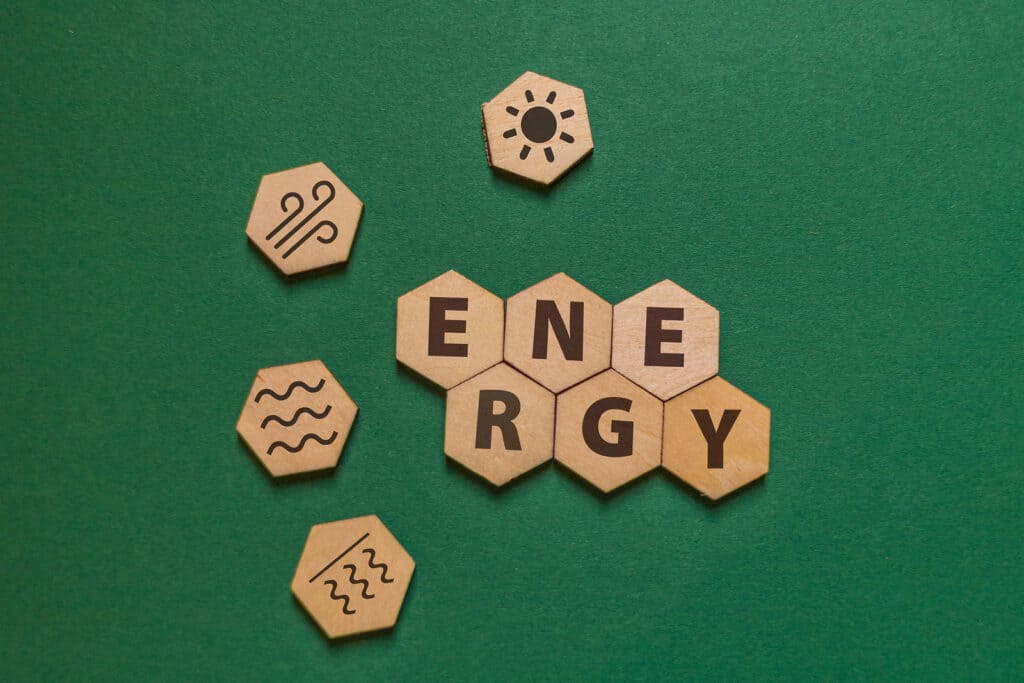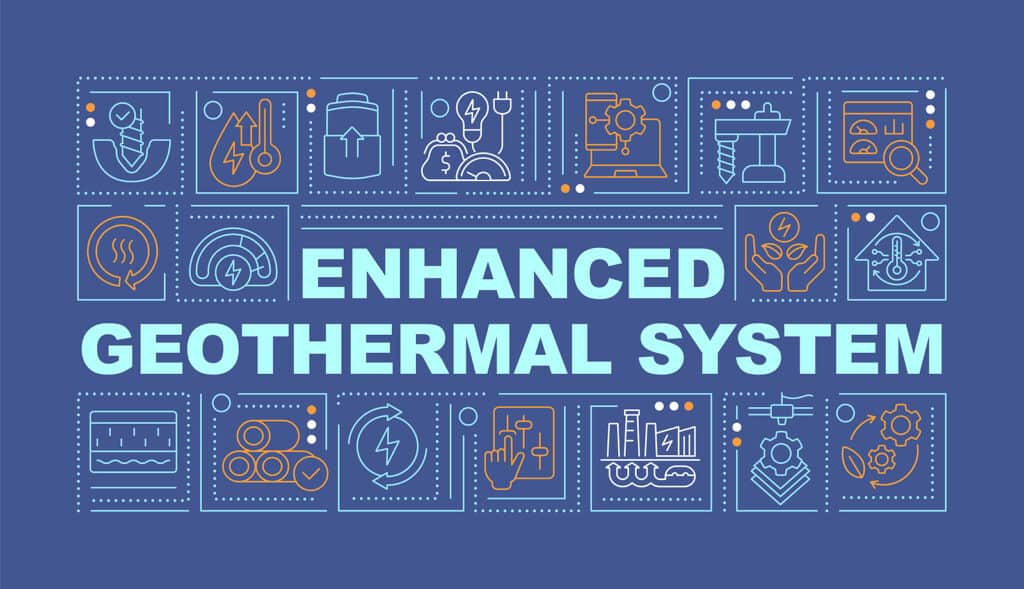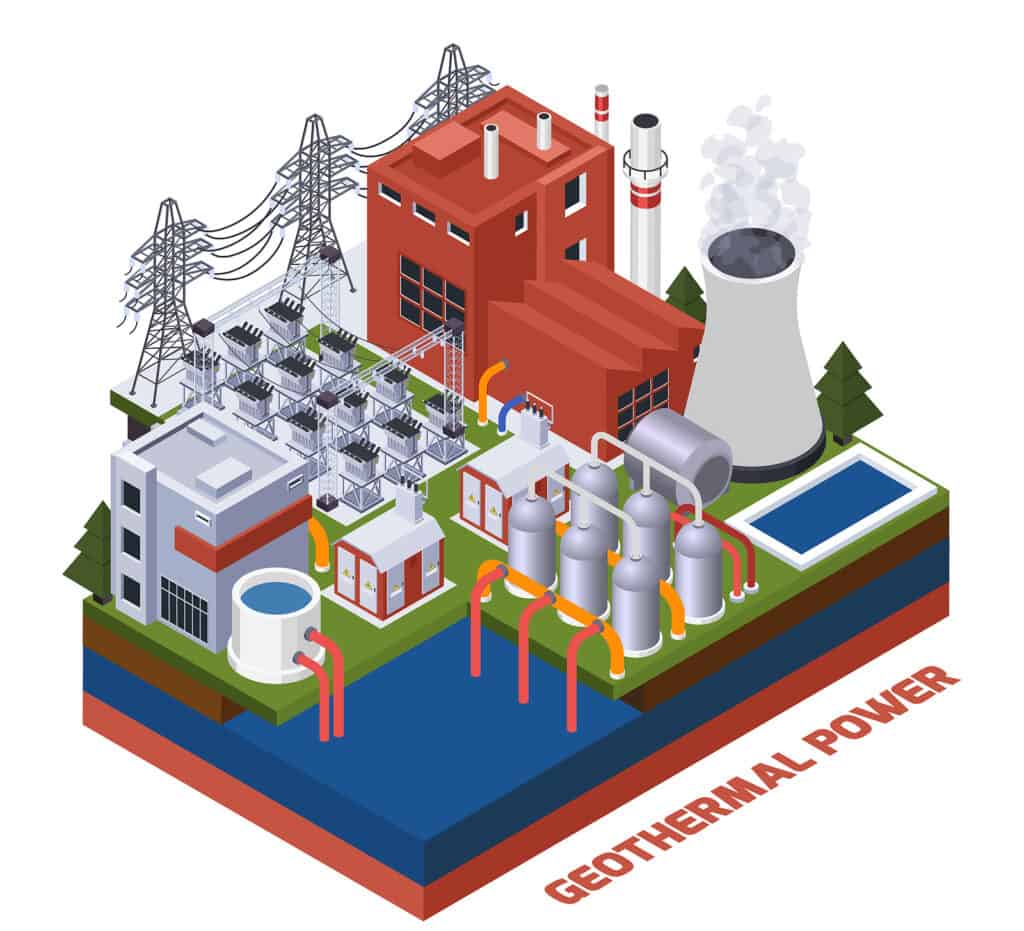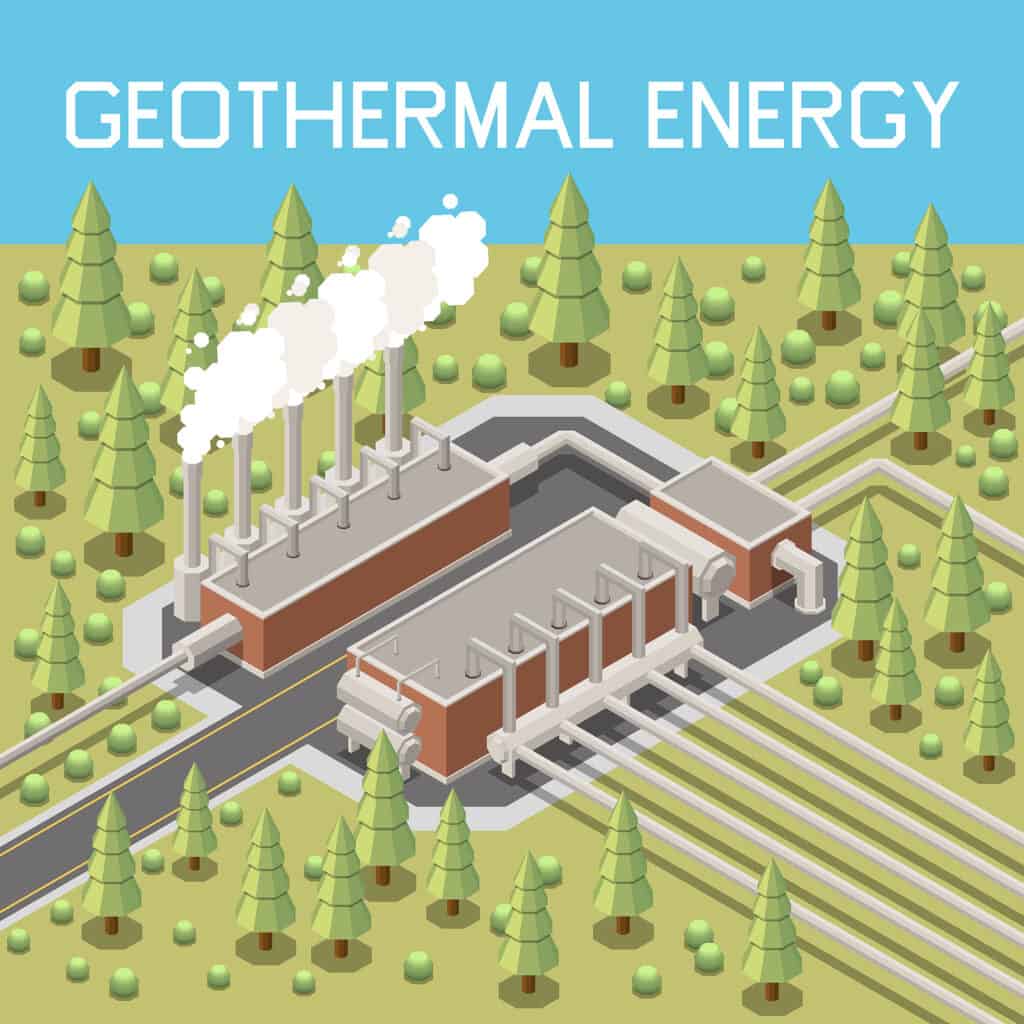The Benefits of Geothermal Energy: How it Can Help You Save Money and Energy
In an era of increasing concern over climate change and rising energy costs, finding sustainable and cost-effective energy solutions is of paramount importance. Geothermal energy has emerged as a promising alternative that harnesses the Earth's natural heat to generate power. In this comprehensive guide, we will explore the numerous benefits of geothermal energy and how it can help you save money while reducing your environmental footprint.
What is Geothermal Energy?
Understanding Geothermal Heat
Geothermal energy is a renewable energy source that taps into the abundant heat stored within the Earth's core. The Earth's core, composed of extremely hot molten rock and metal, acts as an immense reservoir of thermal energy. This natural heat, generated by the radioactive decay of elements and residual heat from the planet's formation, can be harnessed and utilized for a wide range of applications.
Geothermal energy extraction involves accessing this heat by drilling wells deep into the Earth's crust, typically several kilometers below the surface. As the depth increases, the temperature rises significantly due to the geothermal gradient, which is the rate of temperature increase with depth. The intense heat found at these depths is then captured and utilized for various purposes.
Geothermal Power Generation
Geothermal power generation is a process that harnesses the Earth's natural heat to produce electricity in an efficient and sustainable manner. It involves the extraction of water or steam from underground reservoirs known as geothermal reservoirs, where the Earth's heat is stored. These reservoirs are typically located several kilometers below the Earth's surface.
To generate electricity, geothermal power plants employ a system of wells and pipes to access the geothermal reservoirs. When the hot water or steam is brought to the surface, it is directed towards turbines. The high temperature and pressure of the geothermal fluid cause the turbine blades to rotate, converting the thermal energy into mechanical energy. The rotating turbines are then connected to generators, which transform the mechanical energy into electrical energy.
The process of geothermal power generation is highly efficient and reliable. The Earth's heat acts as a continuous and renewable energy source, ensuring a consistent supply of thermal energy. Additionally, geothermal power plants have a smaller environmental footprint compared to traditional fossil fuel power plants. They produce minimal greenhouse gas emissions and have a significantly reduced impact on air quality. This makes geothermal power an attractive option for achieving sustainable and environmentally friendly electricity generation.

Environmental Advantages of Geothermal Energy
Reduced Greenhouse Gas Emissions
Geothermal energy is a clean and sustainable power source that emits significantly fewer greenhouse gases compared to conventional fossil fuel-based energy generation. Geothermal power plants produce virtually no carbon dioxide (CO2) emissions and release minimal amounts of other pollutants, contributing to improved air quality and reduced climate change impact.
Preservation of Natural Resources
Geothermal energy is a renewable resource that harnesses the Earth's heat, which is constantly replenished through natural geological processes. Unlike fossil fuels such as coal, oil, and natural gas, geothermal energy does not deplete finite resources. By utilizing the Earth's inexhaustible heat, geothermal power ensures a long-term and sustainable energy supply without the need for resource extraction.
Minimal Environmental Impact
Geothermal power plants have a small physical footprint and require less land compared to other forms of energy generation. They can be built in areas where the Earth's heat is accessible, such as geologically active regions or areas with geothermal reservoirs. The compact size of geothermal power plants minimizes disturbance to natural landscapes and reduces the overall impact on ecosystems and wildlife habitats. This makes geothermal energy an environmentally friendly option that can coexist harmoniously with surrounding environments.
Water Conservation
Geothermal power generation consumes relatively little water compared to other power sources. While water is utilized in the extraction and conversion processes, it is recycled within the geothermal system, significantly reducing water consumption. This aspect is particularly important in regions facing water scarcity or where water resources need to be conserved for other critical needs.
Thermal Pollution Prevention
Geothermal power plants release the geothermal fluids back into the ground after heat extraction. Through careful management and regulation, the injected fluids are often reabsorbed by the Earth, ensuring minimal impact on local water sources. This prevents thermal pollution, which can occur in other forms of power generation where heated water is discharged into natural water bodies, potentially harming aquatic ecosystems and affecting the balance of aquatic life.
Cost Savings with Geothermal Energy
Lower Energy Bills
Geothermal systems offer significant cost savings on energy bills. By utilizing the stable and constant temperature of the Earth, geothermal systems provide efficient heating and cooling, resulting in reduced energy consumption. The consistent performance of geothermal systems ensures a more predictable and cost-effective operation, leading to lower utility bills for homeowners and businesses.
Reduced Maintenance Costs
Geothermal systems have fewer moving parts compared to traditional heating and cooling systems. This simplicity translates to lower maintenance requirements and associated costs. With fewer components susceptible to wear and tear, geothermal systems typically require less frequent repairs and replacements, resulting in reduced maintenance expenses over the system's lifespan.
Long-Term Financial Benefits
Although the initial installation cost of a geothermal system may be higher than conventional systems, the long-term financial benefits outweigh the upfront investment. The significant energy savings achieved by geothermal systems can lead to substantial cost savings over time. The reduced energy consumption translates to lower monthly energy bills, providing homeowners and businesses with long-term financial relief.
Potential Incentives and Rebates
Many governments, utility companies, and environmental organizations offer incentives and rebates to encourage the adoption of geothermal systems. These financial incentives can offset the initial installation cost and enhance the overall cost-effectiveness of geothermal energy. Depending on the location, homeowners and businesses may be eligible for tax credits, grants, or other financial assistance programs, further reducing the financial burden associated with installing a geothermal system.
Increased Property Value
Geothermal systems can enhance the value of properties. Energy-efficient features, such as geothermal heating and cooling, are increasingly valued by prospective buyers and tenants. The presence of a geothermal system can make a property more attractive in the real estate market and potentially increase its resale or rental value, providing additional financial benefits to property owners.

Geothermal Energy and Residential Applications
Geothermal Heating and Cooling Systems
Geothermal heat pumps offer an efficient and sustainable solution for residential heating and cooling. These systems harness the Earth's constant temperature, utilizing it to provide comfortable indoor environments throughout the year. Geothermal heat pumps work by extracting heat from the ground during winter for heating purposes and transferring heat back into the ground during summer for cooling. This geothermal technology significantly reduces energy consumption and offers homeowners consistent and reliable temperature control.
Domestic Hot Water Heating
Geothermal systems can be utilized for domestic hot water heating, providing an additional benefit in residential applications. By leveraging the Earth's heat, geothermal systems can efficiently heat water for various household needs, including bathing, washing dishes, and laundry. This integration reduces reliance on traditional water heating methods, such as electric or gas-powered water heaters, leading to energy savings and lower utility bills.
Geothermal Heat Pumps
Geothermal heat pumps are versatile systems that can be integrated into existing heating and cooling setups, making them a practical option for retrofitting homes. These heat pumps work by exchanging heat with the Earth through a network of pipes buried underground or submerged in a nearby water source. By incorporating a geothermal heat pump into an existing HVAC (Heating, Ventilation, and Air Conditioning) system, homeowners can benefit from the energy efficiency and cost savings offered by geothermal technology without the need for a complete system overhaul.
Improved Indoor Air Quality
Geothermal heating and cooling systems provide not only efficient temperature control but also improve indoor air quality. Unlike traditional forced-air systems that circulate dust, allergens, and pollutants, geothermal systems operate without the need for ductwork. This reduces the potential for airborne particles to be distributed throughout the home, creating a healthier and cleaner living environment for residents.
Quiet Operation
Geothermal systems are known for their quiet operation, enhancing the comfort and tranquility of residential spaces. The absence of noisy outdoor units, commonly found in conventional air conditioning systems, eliminates disruptive noise pollution. This quiet operation ensures a peaceful living environment without disturbances from loud mechanical equipment.
Geothermal Energy for Commercial and Industrial Sectors
District Heating and Cooling Systems
Geothermal energy can be harnessed for district heating and cooling systems, offering efficient and sustainable solutions for entire communities or commercial complexes. Geothermal heat pumps, combined with a network of underground pipes, can distribute heating and cooling to multiple buildings, reducing energy consumption and providing consistent comfort for residents and businesses. District systems utilizing geothermal energy contribute to the overall energy efficiency and environmental sustainability of urban areas.
Industrial Processes
Geothermal energy holds potential applications in various industrial processes, offering businesses a way to reduce energy costs and minimize their environmental impact. In the industrial sector, geothermal energy can be utilized for processes such as food processing, manufacturing, and drying of agricultural products. The high-temperature geothermal resources can provide a reliable and renewable source of heat, allowing industries to decrease reliance on fossil fuels, improve operational efficiency, and contribute to a more sustainable production process.
Agricultural Applications
Geothermal systems find valuable applications in the agricultural sector, supporting sustainable practices while minimizing energy consumption. Greenhouse heating is one of the prominent uses, where geothermal energy is utilized to maintain optimal temperature and humidity levels for plant growth. Geothermal heat pumps or geothermal water sources can provide the necessary heat for soil warming, enabling year-round cultivation and extending growing seasons. Additionally, geothermal energy can be utilized in aquaculture systems, providing a stable thermal environment for fish and seafood farming.
Energy and Cost Savings
Geothermal energy offers significant energy and cost savings for commercial and industrial sectors. By tapping into the Earth's natural heat, businesses can reduce their reliance on fossil fuel-based energy sources, resulting in lower energy bills and decreased operational expenses. The long-term financial benefits of geothermal energy, including potential incentives and grants, contribute to improved cost-effectiveness and enhance the economic viability of adopting geothermal systems in commercial and industrial settings.
Environmental Stewardship
Utilizing geothermal energy in commercial and industrial sectors promotes environmental stewardship. By reducing greenhouse gas emissions, businesses can contribute to climate change mitigation efforts and improve local air quality. Geothermal systems provide a renewable and sustainable energy source that aligns with corporate social responsibility goals and supports a greener and more sustainable future.

Overcoming Challenges and Expanding Geothermal Energy
Technological Advancements
Ongoing research and development efforts are dedicated to enhancing geothermal technologies. Advancements in drilling techniques, reservoir engineering, and power plant design aim to improve the efficiency, cost-effectiveness, and accessibility of geothermal energy. These technological innovations can lead to increased geothermal resource utilization and expand the range of viable geothermal projects.
Policy Support and Incentives
Government policies and incentives play a crucial role in fostering the growth of geothermal energy. Supportive regulations, such as streamlined permitting processes and clear land-use policies, can facilitate project development. Additionally, financial incentives such as grants, loan programs, and tax credits provide financial support and encourage investment in geothermal projects. Policy frameworks that prioritize renewable energy sources, including geothermal, can create a favorable market environment and accelerate the deployment of geothermal technologies.
Research and Development
Continued investment in research and development is vital to address technical and economic challenges and fully unlock the potential of geothermal energy. Ongoing research efforts focus on improving exploration techniques to identify geothermal resources accurately. Development of advanced materials for heat exchangers and power plant components can enhance system efficiency and reliability. Additionally, research into innovative technologies, such as enhanced geothermal systems and binary cycle power plants, aims to expand the geothermal resource base and improve overall project economics.
Collaboration and Knowledge Sharing
Collaboration between industry stakeholders, research institutions, and government entities is crucial for advancing geothermal energy. Sharing best practices, knowledge, and data promotes innovation, accelerates technology adoption, and helps overcome common challenges. Collaborative initiatives can foster research collaborations, joint projects, and the exchange of expertise, driving the growth of geothermal energy on a global scale.
Public Awareness and Education
Increasing public awareness and understanding of geothermal energy can foster its wider adoption. Educational initiatives, public outreach programs, and awareness campaigns can help demystify geothermal energy and highlight its benefits, both environmental and economic. By informing the public about the potential of geothermal energy and its role in achieving sustainable energy goals, communities can actively support and advocate for the expansion of geothermal projects.
FAQs
1. WHAT IS GEOTHERMAL ENERGY AND HOW DOES IT WORK?
Wells can be drilled into the earth to tap this energy. In the form of naturally occurring steam and hot water, geothermal energy can be drawn to the surface to generate electricity, heat and cool buildings, and serve other uses.
2. WHAT ARE THE BENEFITS OF USING GEOTHERMAL ENERGY?
Several attributes make geothermal a beneficial source of energy, including:
- It's clean, offering energy that can be extracted without burning fossil fuels such as coal, gas, or oil. Using geothermal for electricity produces only about one-sixth of the carbon dioxide of a natural gas power plant, and little—if any—nitrous oxide or sulfur dioxide. Binary-cycle geothermal plants, which operate in a closed cycle, release essentially zero emissions.
- Geothermal power is “homegrown,” offering a domestic source of reliable, renewable energy.
- Geothermal energy is available 24 hours a day, 365 days a year, regardless of weather. Geothermal power plants have a high-capacity factor—typically 90% or higher—meaning that they can operate at maximum capacity nearly all the time. These factors mean that geothermal can balance intermittent sources of energy like wind and solar, making it a critical part of the national renewable energy mix.
- Geothermal energy can also be used to heat and cool homes and businesses, either with geothermal heat pumps or through direct use.
3. WHY IS GEOTHERMAL ENERGY A RENEWABLE RESOURCE?
- Geothermal energy is heat that flows continuously from the Earth’s interior to the surface—and has been doing so for about 4.5 billion years. The temperature at the center of the Earth is about the same as the surface of the sun (nearly 6,000°C, or about 10,800°F).
- This heat is continually replenished by the decay of naturally occurring radioactive elements beneath the subsurface and will remain available for billions of years, ensuring an essentially inexhaustible supply of energy.
4. WHERE IS GEOTHERMAL ENERGY AVAILABLE?
In the United States, conventional hydrothermal resources—natural reservoirs of steam or hot water—are available primarily in the western states, Alaska, and Hawaii. However, geothermal energy can be tapped almost anywhere with geothermal heat pumps and direct-use applications. Enhanced geothermal systems (EGS), which can produce power wherever there is hot rock, will be increasingly deployed as the technology is further developed. EGS will also help expand geothermal heating and cooling nationwide.
5. WHAT ARE SOME ENVIRONMENTAL BENEFITS OF USING GEOTHERMAL ENERGY?
Geothermal technologies offer many environmental benefits, including:
- Low emissions from electricity generation. Geothermal power plants largely release only excess steam, with most plants discharging no air or liquid. This makes geothermal power plants a clean source of electricity and an important contributor to the nation’s zero-carbon future. Reaching the levels of geothermal electricity deployment outlined in the GeoVision analysis could help the United States avoid greenhouse gas emissions equal to the annual emissions of 6 million cars.
- Critical materials. Some geothermal plants produce solid materials, or sludges, that require disposal in approved sites. Some of these solids are now being extracted for sale (zinc, silica, and sulfur, for example), making the resource even more valuable and environmentally friendly. In addition, lithium—a critical material—is present in high concentrations in some geothermal brines. Learning to cost-effectively extract that lithium could provide the United States with a domestic source of this important material.
- Efficiency and reduced carbon emissions for heating and cooling. Geothermal energy offers U.S. homes and businesses low-carbon and energy-efficient heating and cooling options, such as geothermal heat pumps, which use the constant temperature of the Earth to regulate heat from buildings. Reaching the target number of installed geothermal heat pumps outlined in the GeoVision analysis could help the U.S. avoid greenhouse gas emissions equal to the annual emissions of 20 million cars.
- Comparably low water use. By 2050, geothermal energy could represent 8.5% of total U.S. electricity generation while being accountable for only 1.1% of power-sector water withdrawals. The majority of this growth could be supported using non-freshwater sources.
6. WHAT IS THE VISUAL IMPACT OF GEOTHERMAL TECHNOLOGIES?
District heating systems and geothermal heat pumps can usually be integrated easily into communities, with almost no visual impact. Geothermal power plants tend to have a lower profile and smaller land footprint compared to many other energy-generation technologies, and they do not require fuel storage, transportation, or combustion.
7. CAN WE RUN OUT OF GEOTHERMAL ENERGY?
Geothermal energy is heat that flows continuously from the Earth’s core to the surface—and has been doing so for about 4.5 billion years. This heat is continually replenished by the decay of naturally occurring radioactive elements in the Earth’s interior and will remain available for billions of years, ensuring an essentially inexhaustible supply of energy. Geothermal power plants operate by drawing fluid or steam from underground reservoirs, and these reservoirs have been demonstrated long term at geothermal plants such as Lardarello in Italy (1913), Wairakei in New Zealand (1958), and The Geysers in California (1960).
Some geothermal power plants have experienced pressure and production declines, but operators are finding solutions to maintain reservoir pressure. For instance, the city of Santa Rosa, California, pipes its treated wastewater to The Geysers geothermal field to be used as reinjection fluid, thereby prolonging the life of the reservoir while recycling the treated wastewater.
8. IS GEOTHERMAL ENERGY EXPENSIVE?
Over the long-term, geothermal power offers a cost-effective means of achieving aggressive decarbonization pathways; in the short-term, however, developing geothermal systems carries significant up-front costs.
Geothermal heat pumps (GHPs), for example, are cost-effective, mature technologies that have been in existence for decades but remain a niche application, due to the costs of implementing ground heat-exchanger loops. Likewise, the costs of building a geothermal power plant are heavily weighted toward early expenses rather than fuel to keep them running. Geothermal energy’s high-capacity factor—its ability to produce electricity 90% of the time or more—means that costs can be recouped more quickly because there is very little downtime once a plant is operational. But exploration activities—from pre-drilling geotechnical studies through exploration, confirmation, and development drilling—have a collective impact on overall project costs and success.
9. WHAT ARE THE DIFFERENT TYPES OF GEOTHERMAL POWER PLANTS?
There are three geothermal power plant technologies being used to convert hydrothermal fluids to electricity: dry steam, flash steam, and binary cycle. The type of conversion is selected during project development and depends on the state of the subsurface fluid (steam or water) and its temperature.
10. WHAT DOES IT COST TO DEVELOP A GEOTHERMAL POWER PLANT?
The costs of a geothermal plant are heavily weighted toward early expenses, rather than fuel to keep them running. Exploration activities—pre-drilling geotechnical studies, exploration, confirmation, and development drilling—have a collective impact on overall project costs and success. Most geothermal power plants can run at greater than 90% availability (i.e., producing more than 90% of the time), which means that costs can be recouped more quickly. However, operators need to balance operations with costs and electricity prices. Running at 97% or 98% can increase maintenance costs, but higher-priced electricity justifies running the plant 98% of the time because the resulting higher maintenance costs will be recovered.
Conclusion
In conclusion, geothermal energy emerges as a highly advantageous and promising energy source. Its numerous benefits, such as the significant reduction of greenhouse gas emissions, substantial cost savings, and dependable energy supply, make it a compelling choice across residential, commercial, and industrial sectors. Geothermal systems not only provide a sustainable and efficient solution for meeting our energy demands but also play a crucial role in minimizing our environmental impact.
By harnessing the Earth's natural heat, geothermal energy offers a viable pathway to reduce our carbon footprint and mitigate climate change. The utilization of geothermal systems in residential settings leads to lower energy bills, improved comfort, and enhanced indoor air quality. In commercial and industrial sectors, geothermal energy presents opportunities for efficient heating and cooling solutions, cost-effective industrial processes, and sustainable agricultural applications.
Moreover, the ongoing advancements in geothermal technology, supported by policy frameworks and incentives, foster its growth and make it increasingly accessible. Continued investment in research and development further drives innovation, addressing technical and economic challenges, and expanding the potential of geothermal energy.
Embracing geothermal energy represents a significant step towards achieving a cleaner and more sustainable future. By harnessing the Earth's vast renewable heat, we can simultaneously meet our energy needs and protect the environment. Geothermal energy stands as a reliable and environmentally friendly alternative that contributes to the global transition to a more sustainable energy mix.
Sources
- https://www.twi-global.com/technical-knowledge/faqs/geothermal-energy/pros-and-cons
- https://www.greenmatch.co.uk/blog/2014/04/advantages-and-disadvantages-of-geothermal-energy
- https://www.enelgreenpower.com/learning-hub/renewable-energies/geothermal-energy/advantages
- https://www.energy.gov/eere/geothermal/geothermal-faqs

